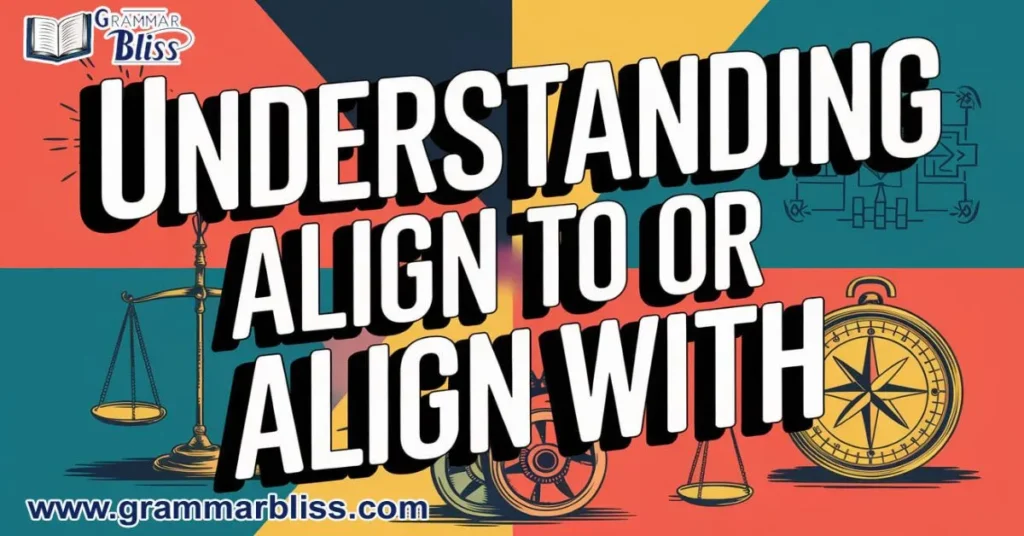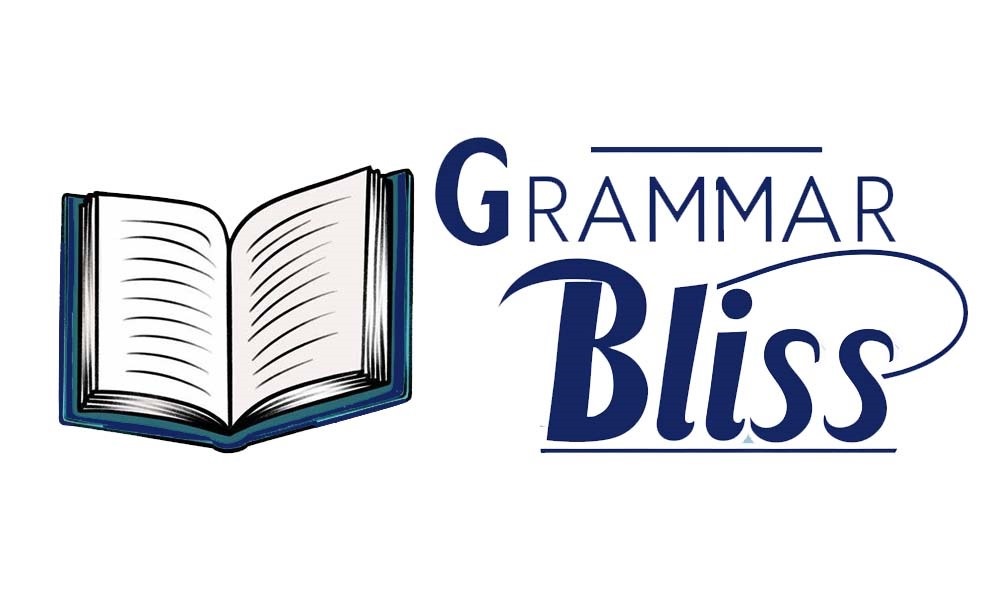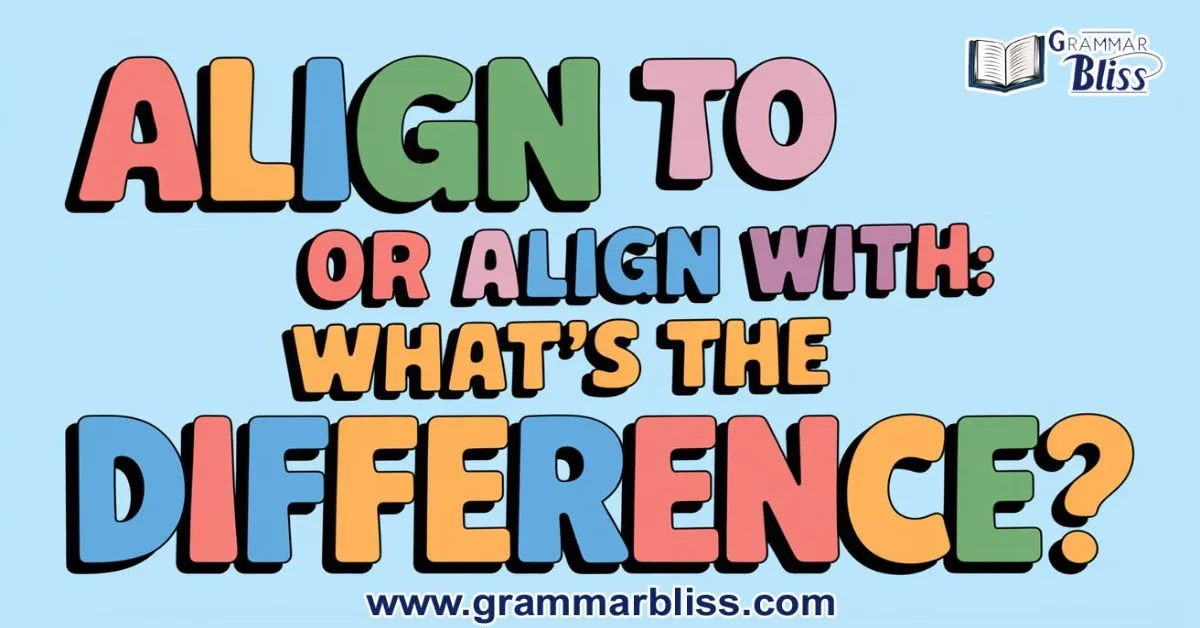Many people struggle with the correct use of “Align to”or Align with” in English grammar. While both phrases relate to coordination and conformity, they are used in different contexts. Understanding the distinction is essential for business communication, academic writing, and professional writing.
The phrase “Align to” is commonly used in strategic alignment, such as aligning business objectives or workplace policies with a specific goal. On the other hand, “Align with” is preferred when discussing shared objectives, organizational values, or team collaboration.
Learning the correct usage will improve writing clarity, enhance communication effectiveness, and ensure writing consistency in content creation, formal writing, and professional tone.
Quick Summary
The phrases “Align to” and with” have different meanings in English grammar and professional writing. “Align to” is used when something is adjusted to match business goals, compliance standards, or strategic alignment. It often appears in policy adherence, project management, and workplace compliance.
“Align with” implies agreement or harmony with organizational values, team collaboration, or a company mission. It highlights shared objectives and coordination. Understanding this distinction improves writing clarity, enhances communication effectiveness, and ensures language precision in academic writing, content creation, and business communication.
Learn more: https://grammarbliss.com/trainning-or-training-whats-the-difference/
Understanding Align to or Align with

The difference between “align to”or with” lies in their contextual use. The phrase “align to” suggests adjusting or positioning something in relation to a fixed point, while “align with” indicates harmony, agreement, or similarity with an idea, vision, or group.
For example, in business alignment, companies often align to corporate policies but align with organizational values. This distinction is key in workplace policies, project management, and marketing strategy, ensuring writing consistency and communication effectiveness.
Definition and Usage
“Align to” is used when something needs to be adjusted or positioned in relation to a fixed point or standard. It often appears in formal writing, business communication, and strategic planning. This phrase is common in industries where compliance standards, workplace policies, and industry regulations require adherence.
For example, in a company setting, employees may be required to align to a goal set by their managers. This means their actions must conform to a specific business objective. Similarly, software updates must align to industry compliance rules to maintain security and efficiency.
Synonyms for Align to:
| Synonym | Meaning |
| Adjust to | Make changes to fit a standard |
| Conform to | Follow a set of rules or guidelines |
| Adapt to | Modify behavior or actions to fit a situation |
| Match to | Ensure consistency with a set standard |
| Correspond to | Have a direct connection with something |
Definition and Usage
“Align with” is used when agreement, harmony, or coordination is involved. It is commonly seen in team collaboration, business ethics, and content alignment. When something aligns with a vision, it means it shares the same goals, values, or objectives.
For instance, a company’s branding strategy should align with its mission statement to ensure a strong and consistent identity. Similarly, employees should align with corporate values to promote a unified workplace culture. Marketing alignment also follows this principle, ensuring that campaigns align with brand messaging.
Read more article: https://grammarbliss.com/emersion-vs-immersion-master-the-terms-and-unlock-their-power/
Synonyms for Align with:
| Synonym | Meaning |
| Agree with | Have the same opinion or belief |
| Harmonize with | Work well together or complement each other |
| Associate with | Be connected with a group or idea |
| Be in sync with | Function in coordination with something |
| Be consistent with | Maintain a similar approach or standard |
Side-by-Side Comparison
| Feature | Align to | Align with |
| Meaning | Position or adjust something according to a standard | Agree or be in harmony with an idea or principle |
| Usage Context | Policies, rules, goals, and compliance | Values, beliefs, teamwork, and ethics |
| Example | “Align to industry regulations” | “Align with company culture” |
| Common in | Workplace compliance, formatting rules, strategic planning | Collaboration, ethical values, marketing alignment |
Everyday Usage Examples

Align to
When companies roll out new standard operating procedures, employees are expected to align to workplace compliance rules. A marketing department may align to formatting rules to ensure brand consistency. Similarly, a project team might align to strategic planning guidelines to stay on track.
Align with
When teams work together, they need to align with shared objectives to achieve success. In content creation, writers must align with writing style improvement techniques to maintain quality. Additionally, aligning with company mission ensures that employees contribute to a positive and productive environment.
Grammar Rules and Examples
Understanding the grammar best practices for “align to” and with” helps ensure linguistic accuracy in writing. Here are some key rules:
- Use “align to” when referring to a fixed point, structure, or guideline.
- Use “align with” when discussing agreement, teamwork, or values.
- Avoid mixing these phrases in contexts where they do not naturally fit.
Examples:
- Incorrect: “Our marketing strategy must align to our mission.”
- Correct: “Our marketing strategy must align with our mission.”
Learn more: https://grammarbliss.com/fairing-or-faring/
FAQ’s:
How do you use “align with” in a sentence?
Example: “The new policies align with the company’s mission and ethical values.”
What does “align with” mean?
It means to be in agreement or harmony with something, such as business goals or workplace policies.
Conclusion
Understanding the difference between “Align to and with” improves writing clarity, especially in professional communication. Use “Align to” when referring to specific points, standards, or guidelines. Use “Align with” when discussing agreements, shared objectives, or organizational values. Mastering these distinctions enhances academic writing, business language, and content creation. Whether in corporate policies, marketing strategy, or team collaboration, the correct phrase ensures effective messaging and writing consistency. Paying attention to grammar rules and language precision leads to professionalism in correspondence and stronger communication.

